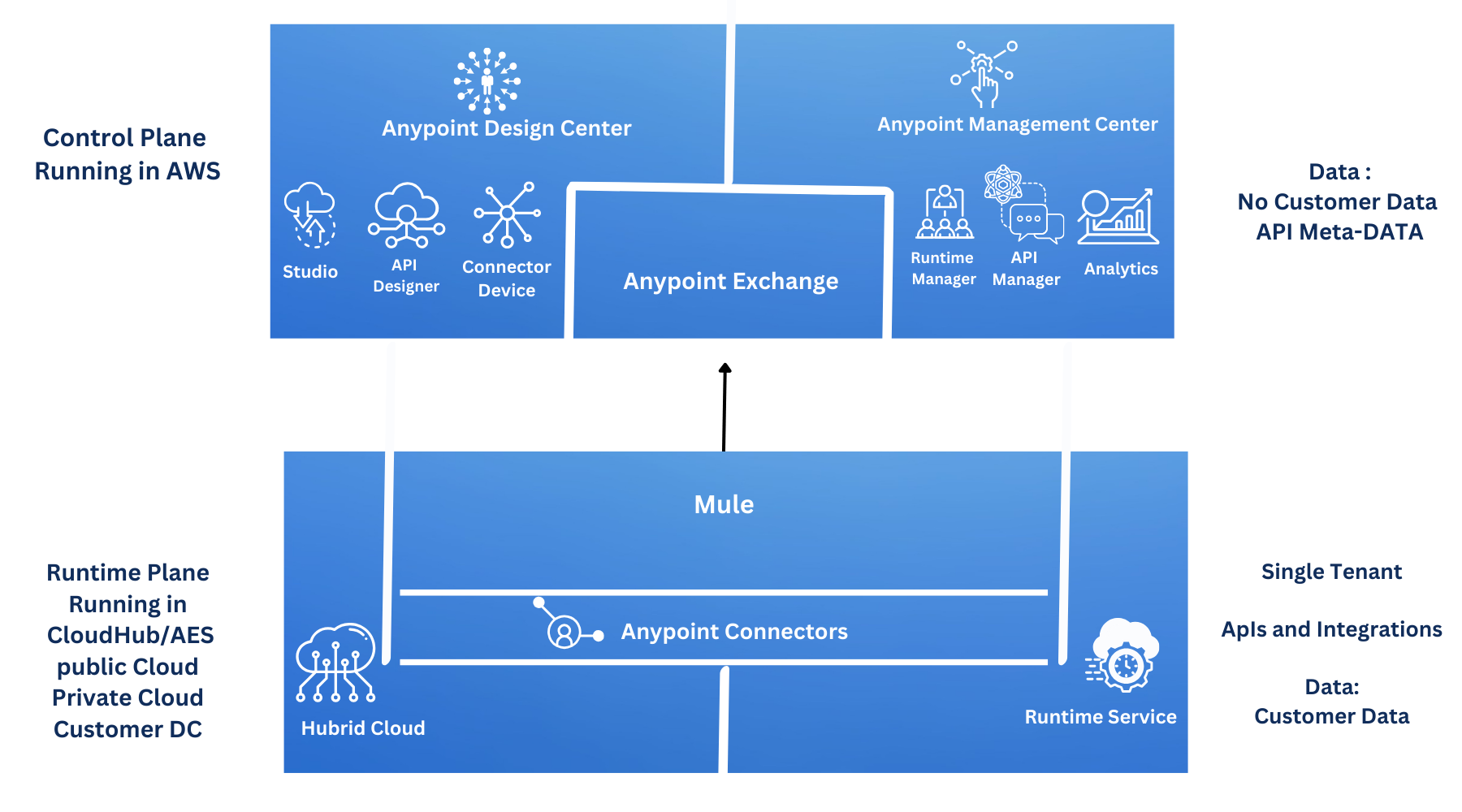MuleSoft Platform deployment options
Main parts of Any-point Platform
The MuleSoft can be deploy in a variety of different ways including Cloud and On-Premise option. From a deployment point of view It important to understand that the platform divided into two fundamental parts and this shown in the diagram below:

Control Plane Platform
Runtime Plane in Platform
The runtime plane in MuleSoft deployments is the execution environment in which your Mule apps execute and handle data. It is where incoming requests are handled and the integration logic is actually carried out.
For any Mule application to function, it must be deployed to a Mule runtime engine instance. Three distinct deployment targets are supported by MuleSoft: on-premises Mule instances, Anypoint Runtime Fabric, and CloudHub.
The Mule runtime engine instances required to run the applications are automatically managed by CloudHub and Anypoint Runtime Fabric when you deploy applications to them.
If you deploy applications on-premises, the installation of Mule runtime engine is required.
Cloud-Hub
Runtime Fabric (RTF)
Hybrid
For More information : Deployment Options


